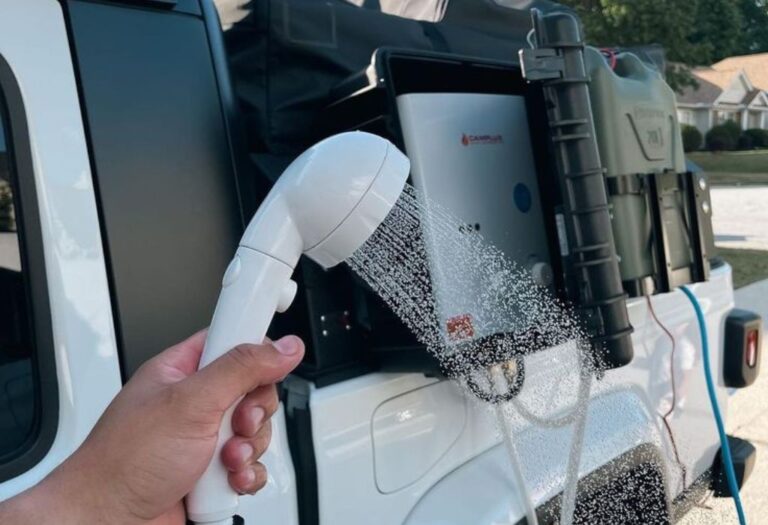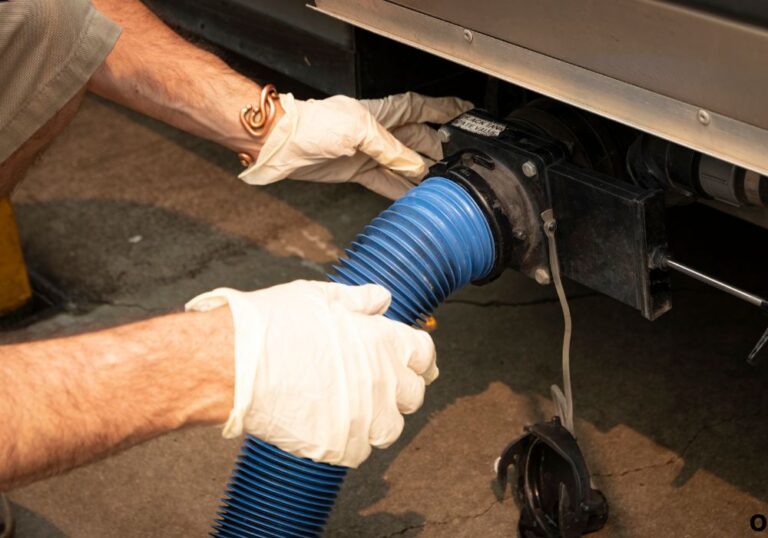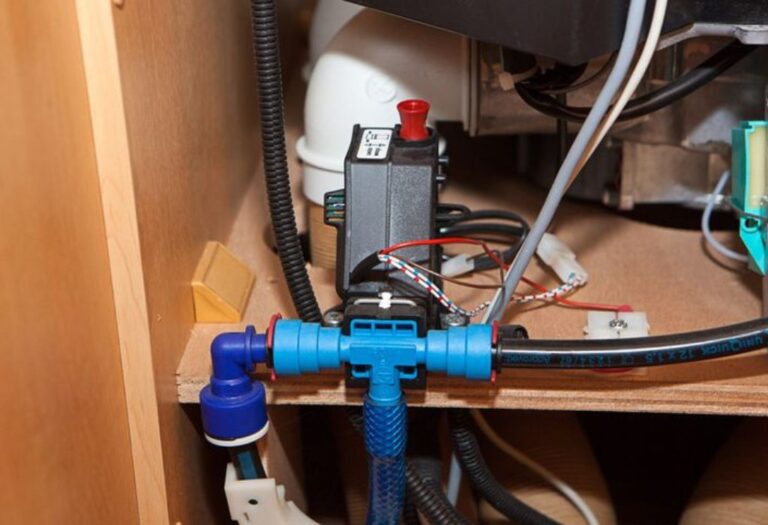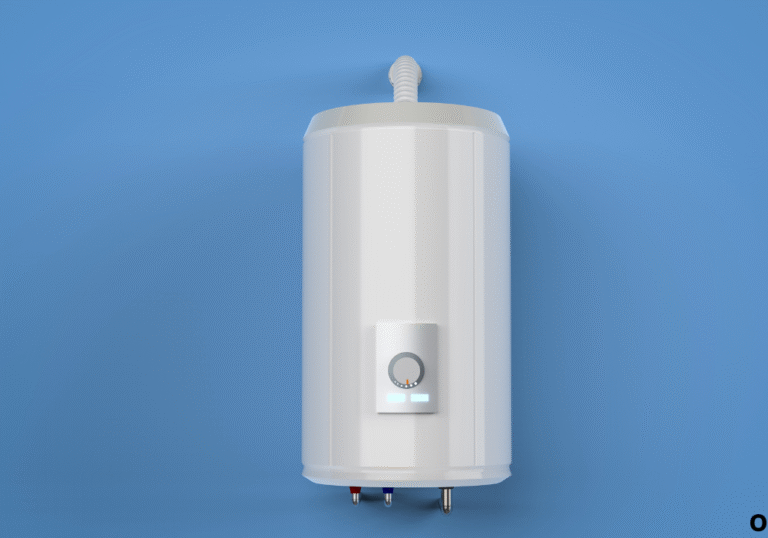How to Turn On Electric Water Heater in RV
To turn on your RV’s electric water heater:
- Make sure the tank is full.
- Confirm the bypass valve is open.
- Check power supply (shore power or generator).
- Locate and flip the electric switch (inside or outside).
- Wait 20–30 minutes for hot water to reach full temperature.
This step-by-step guide explains how to safely power it on, prevent element damage, and maintain steady hot water on every trip.
Understanding How an RV Electric Water Heater Works
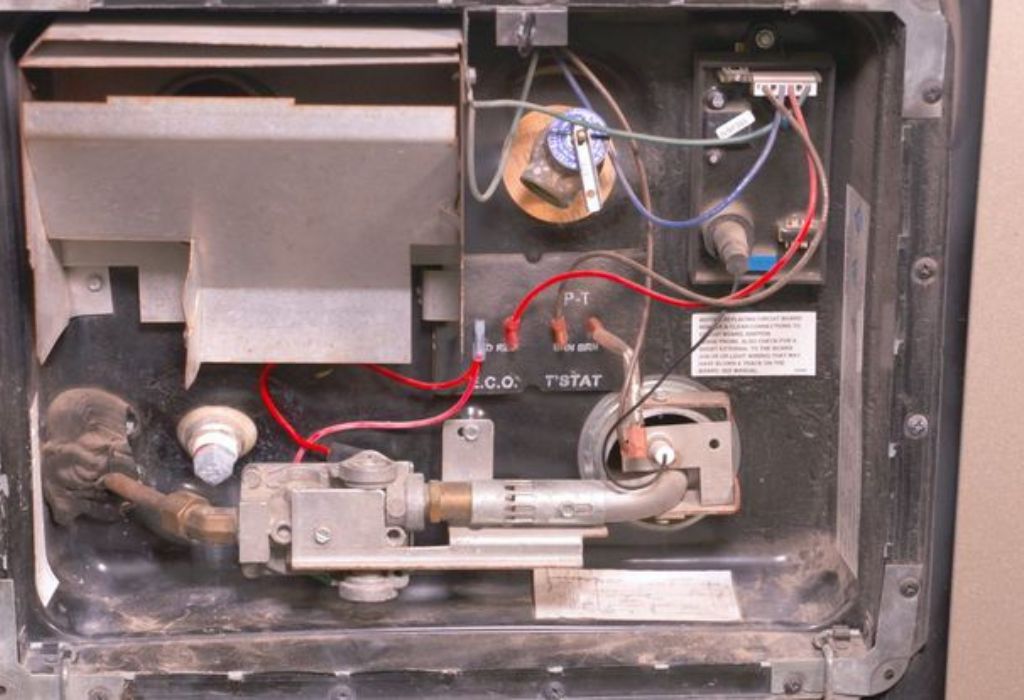
An RV electric water heater uses a 120-volt heating element inside a six- to ten-gallon tank. The element warms the water just like a home system, but with limited space and power output.
Most modern RVs come equipped with dual-mode water heaters (electric and propane). This allows you to choose between campground electricity or propane fuel based on your setup.
Key Components
- Electric switch (inside cabin or exterior access panel)
- Heating element
- Thermostat and ECO reset buttons
- Pressure relief valve
- Water heater bypass valve
According to RVshare, about 70% of RVs are fitted with dual-mode systems, providing greater energy flexibility (RVshare).
Safety First: Before Turning It On
Before applying power, confirm that the water heater tank is full. Firing an empty tank can burn the electric element in 10–15 seconds (RV Life).
Pre-Start Checklist
- Water system filled or connected to city water
- Hot water tap runs smoothly (no air)
- Bypass valve in open position
- Electric switch off during filling
- Propane mode off if not being used
Open the pressure relief valve briefly; a steady stream confirms a full tank.
Step-by-Step: How to Turn On Electric Water Heater in RV
1. Fill and Pressurize the Water System
Run the hot water faucet until it flows consistently. This ensures no trapped air and a full water heater tank.
2. Confirm the Power Source
Connect to shore power or start your generator. The water heater requires a 120-volt AC source to function.
3. Locate the Electric Switch
Depending on your RV model:
- The interior switch may be near the control panel or kitchen.
- The exterior switch is typically behind the water heater’s metal access door.
4. Turn the Electric Switch ON
Once you’ve verified the tank is full, flip the electric switch on. Many combo systems have two switches—one for electric and one for propane. Ensure you activate only the electric side for this step.
5. Wait for the Water to Heat
A 6-gallon tank usually reaches full temperature in 20–30 minutes on electric mode. You may run propane and electric together for quicker results.
Troubleshooting Common Issues
Even with correct operation, problems can occur. Below are frequent causes and quick fixes.
No Hot Water
- Circuit breaker may have tripped.
- Electric switch turned off.
- Thermostat or ECO button needs resetting.
Water Warm but Not Hot
- Partially burnt heating element.
- Faulty thermostat or wiring connection.
Breaker Keeps Tripping
- Overloaded circuit or shorted element.
- Unplug other appliances before retrying.
No Light on the Switch
- Blown fuse or disconnected power supply.
Always disconnect electrical power before inspecting components.
Electric vs. Propane Mode
| Feature | Electric Mode | Propane Mode |
| Power Source | Shore power or generator | Liquid propane |
| Heating Speed | 20–30 minutes | 15–20 minutes |
| Energy Efficiency | Cost-effective on hookups | Less efficient for long use |
| Maintenance | Minimal soot buildup | Requires burner inspection |
| Ideal Use | Campgrounds with hookups | Boondocking or fast heating |
Using both modes together is safe and can cut heating time by up to 40%, ideal for multiple showers or large families.
RV Water Heater Maintenance Tips
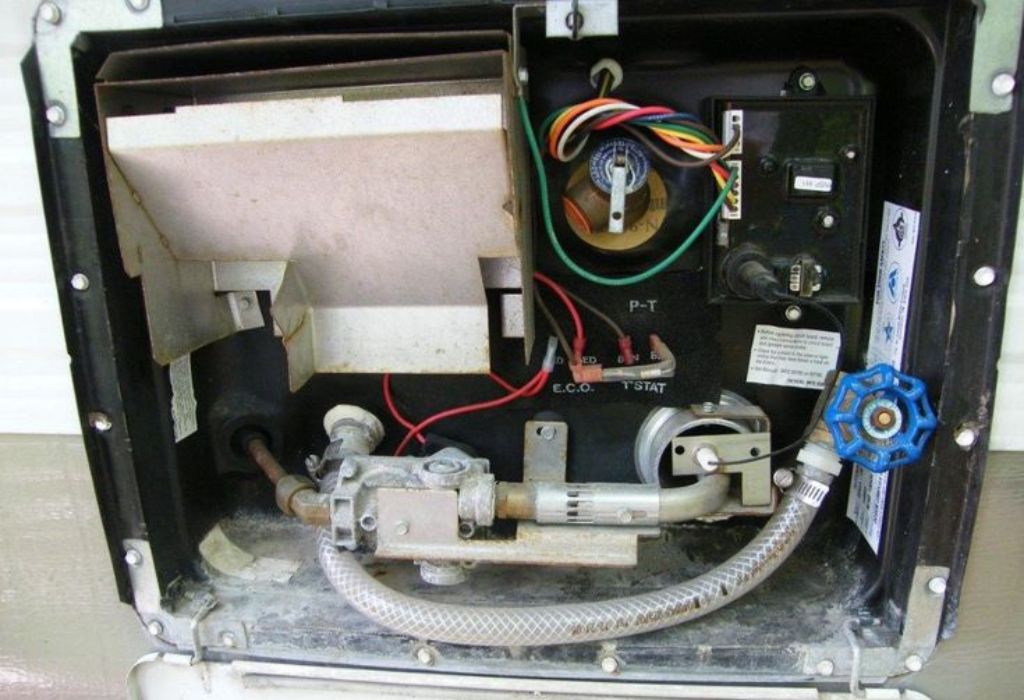
Routine maintenance extends lifespan and prevents slow heating or electrical failures.
Every 3–6 Months
- Drain and flush the tank to remove sediment.
- Inspect and replace the anode rod (Suburban models).
- Check electrical connections and heating element for corrosion.
Important:
Mineral buildup on the heating element acts as insulation, increasing power use and reducing efficiency over time.
Electrical and Safety Precautions
- Always use a surge protector when connecting to campground power.
- Avoid operating the heater while driving; water movement may expose the element.
- Keep the area around the access panel clear of debris and flammable materials.
- Before restarting after storage, ensure the tank is refilled and air is bled from lines.
If you ever notice burning smells or smoke, disconnect power immediately and inspect the wiring or heating element before reuse.
Tankless RV Water Heater Option
Many full-time RV owners upgrade to tankless systems for on-demand hot water.
Advantages
- Instant hot water delivery
- Continuous heating—no waiting between showers
- Lower overall water consumption
Considerations
- Higher installation cost
- Requires stable electrical output or strong propane supply
Top brands include Furrion, Girard, and Truma AquaGo, known for efficiency and ease of operation.
Conclusion
Turning on your RV’s electric water heater is simple once you follow the right steps: fill the tank, confirm power, flip the switch, and wait.
Never heat an empty tank, and always verify the system’s water flow before activating. For faster heating, combine propane and electric modes safely.
With regular maintenance, your water heater will deliver reliable, efficient performance every trip — keeping your RV experience comfortable and worry-free.
I’m David R. Coleman, the founder, lead writer, and lifelong tool enthusiast behind GarageToolPro.com. With years of experience in automotive repair, woodworking, and home DIY projects, I created this platform to share practical tips, detailed tool reviews, and step-by-step guides that help mechanics, hobbyists, and homeowners get the job done right the first time.

